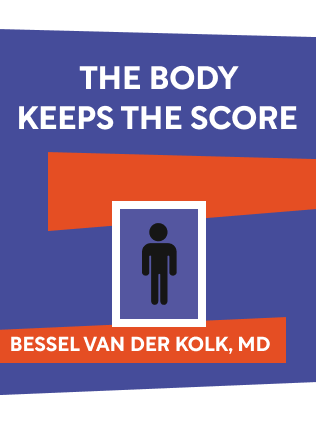

This article is an excerpt from the Shortform book guide to "The Body Keeps The Score" by Bessel van der Kolk. Shortform has the world's best summaries and analyses of books you should be reading.
Like this article? Sign up for a free trial here .
What is learned helplessness theory? Why do people with PTSD sometimes develop learned helplessness?
Learned helplessness theory is the idea that people who survive trauma give up trying to escape their situation. Instead, they experience immobilization.
Read more about learned helplessness theory and the scientists who developed the theory.
Trauma Survivors and Learned Helplessness Theory
There are two ways to respond to a traumatic event: with effective action or immobilization.
Effective action involves two aspects:
- The ability to take an active role in trying to escape the trauma.
- Reaching the end of the traumatic experience and getting the opportunity to calm down in a safe place, allowing your brain to make sense of the event.
Immobilization may be caused by being held down during abuse, stuck in a car during an accident, or in a war zone with nowhere to escape the violence. Learned helplessness theory is when people who are immobilized remain stuck in a state of shock and and are unable to move on. After suffering inescapable trauma, many trauma survivors develop learned helplessness and give up on trying to escape or improve their circumstances. Trauma has curbed their fight-or-flight instinct, and instead of risking unknown possibilities, they remain in the familiar fear.
Comparable effects were seen on dogs in an experiment by two scientists, Steven Maier of the University of Colorado and Martin Seligman of the University of Pennsylvania. The researchers administered electric shocks to dogs who were stuck in locked cages. Then they opened the cages and administered more shocks to these dogs, as well as to a control group of dogs who hadn’t been shocked previously. The dogs who hadn’t been shocked before ran away as soon as they were shocked, but the dogs who had been trapped in the cages made no effort to escape — they simply lay there, afraid and defecating.
The traumatized dogs in Maier and Seligman’s experiment also had abnormally high levels of stress hormones. Again, there is a parallel with trauma survivors; when traumatized people face a perceived threat, their stress hormones spike disproportionately and take more time to return to a baseline level long after the threat has passed.
Even among trauma survivors who don’t consciously or outwardly react to a perceived threat, their bodies still react by sounding the alarm to release stress hormones — and elevated stress levels cause people to suffer attention and memory problems, agitation, and sleep issues, and leads to long-term health problems. Because trauma survivors’ bodies continue to be affected by stress hormones, treating trauma requires engaging the body as well as the brain.
Maier and Seligman found that the only way to reverse the effect for the dogs was to repeatedly drag them out of their cages to give them the physical experience of escaping the shocks. This experiment leads the author to wonder if people, too, need a physical experience to overcome their trauma and give them a feeling of control. We’ll explore that more in later chapters.

———End of Preview———
Like what you just read? Read the rest of the world's best book summary and analysis of Bessel van der Kolk's "The Body Keeps The Score" at Shortform .
Here's what you'll find in our full The Body Keeps The Score summary :
- How your past trauma might change your brain and body
- What you can do to help your brain and body heal
- Why some trauma survivors can't recognize themselves in the mirror






